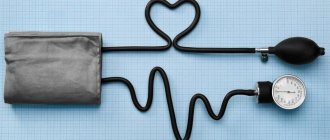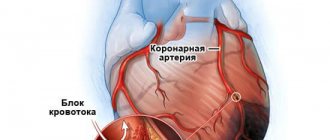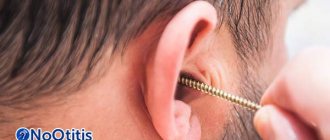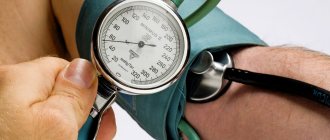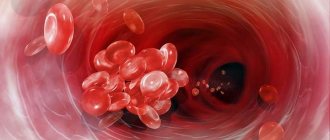- Classification of nosebleeds
- Causes
- Clinical signs
- Diagnostics
- How to stop nosebleeds in adults?
- Possible complications
- Preventing nosebleeds
Nosebleeds are a condition characterized by the leakage of blood from the nasal cavity as a result of a violation of the integrity of the blood vessels. Typically, this condition is preceded by injuries to the nose, diseases of the blood system, and inflammatory infectious processes in the nasopharynx.
Nose bleed
In medicine, bleeding from the nasal cavity is called epistaxis. Most often, this phenomenon appears unexpectedly, and is considered a symptom of a wide variety of pathologies. Before we begin to analyze the reasons why nosebleeds constantly occur, it is necessary to familiarize yourself with the types of this condition. This symptom may be a consequence of systemic problems in the body. Pathologies that cause damage to the vessels of the mucous membrane can be very dangerous for humans. However, sometimes experts consider bleeding to be a harmless symptom. Based on the amount of fluid released, it is customary to distinguish:
- Minor losses - when blood flows out in small drops. As a rule, they do not cause any complications and are not hazardous to health. The negative aspect of this phenomenon is that the affected person may become very frightened. This is especially true for young children.
- Moderate losses - the amount of blood released from the nose in this case is about 2 ml. In this case, a person may simultaneously feel dizziness, general weakness, and visible areas of the skin and mucous membranes begin to turn pale.
- Massive losses - in this case, about 300 ml of blood is released. Associated symptoms will be: severe headache, weakness, loss of consciousness, and shortness of breath.
- Profuse losses - in this case, acute blood loss will develop. In the most severe condition, a person may experience hemorrhagic shock, a sharp drop in blood pressure, fainting, lethargy, and poor circulation.
Algorithm for stopping bleeding
If your nose starts bleeding, then you need to take some actions in the following sequence:
- Sit up straight, tilt your head forward, trying to press your chin closer to your chest.
- Place a cloth moistened with cold water on the bridge of your nose. You can use snow or ice by wrapping it in cloth. If this is not possible, just apply some cold object. At low temperatures, the blood vessels narrow, which reduces the intensity of bleeding.
- Place any vasoconstrictor drops into your nose, which are usually used to relieve congestion in the respiratory system. If you don’t have something like this on hand, you can drip fresh lemon juice.
- Using your thumb and forefinger, press the wings of your nose against the nasal septum. This will completely block breathing through your nose, so you will have to use your mouth for a while. If the bleeding is not very severe, it will stop after 5-10 minutes.
- There are points on the hands and feet that correspond to the nose area. On the sole, this area is located on the side of the big toe, on its outer side in the middle of the nail. The “nasal” zone on the thumb is similar. It is best to rub an irritating ointment like Vietnamese balm into these areas.
- If all else fails, you need to insert cotton swabs soaked in hydrogen peroxide or just water into the nostrils. You need to keep them for about 30 minutes. If the bleeding does not stop, they need to be changed as they become saturated with blood. If during this time the tampons have dried to the nasal mucosa, then moisten them with water and carefully remove them.
Often people throw their head back and lie down so that it is located as low as possible. This is due to the idea that if blood does not flow out of the nostrils, then the bleeding will end faster. This is a misconception. This will not improve the condition, but the blood will go into the pharynx, larynx, etc. As a result, you will choke on your blood, and swallowing it may cause vomiting.
Thus, nosebleeds are a symptom and a problem that needs to be addressed urgently. Pay close attention to this phenomenon, since regular bleeding may indicate the existence of a serious illness.
External reasons
Let's look at why the nose constantly bleeds, and also get acquainted with the causes of periodic bleeding.
The main reasons include mechanical damage to the mucous membrane, as well as pathological natural processes that affect weakened blood vessels. Mechanical circumstances that may cause bleeding from the nasal cavity include:
- Serious injury to the blood vessels in the nasal mucosa. Such injuries most often occur with a strong blow to the face.
- Influence of external factors. This includes overwork, physical activity, and prolonged exposure to direct sunlight.
- Sunstroke. Due to overheating, the surface of the mucous membrane in the sinuses and passages begins to dry out, and small vessels begin to burst.
- Too dry indoor air may be the answer to the question of why your nose constantly bleeds. The reason may also lie in environmental conditions. The fact is that mechanical injuries to the vessels in the nose often occur when the heating is turned on in winter, which causes excessive dryness of the mucous membrane.
Blood clotting and its problems
Regardless of age and health status, the causes of nosebleeds in each person can be due to various factors. The most important thing in this case is to quickly stop the spontaneous release of blood from the vessels.
If the coagulation processes proceed normally, then the bleeding does not last long, since the blood itself forms a blood clot, which closes the hole. However, if the nose bleeds and there is no way to stop it, then this is already a manifestation of pathology. If we exclude a deficiency of vitamins and calcium, then why does blood flow from the nose without stopping?
This is a sign of other blood clotting problems.
Everyone knows such a genetic disease as hemophilia. It appears only in men of any age and condition. The problem is that the genetic nature of the lack of blood clotting ability does not allow such a disease to be cured. In this case, you must immediately consult a doctor, who should be informed about the nature of your illness.
The causes of nosebleeds also lie in the plane of incorrect human actions. It can, voluntarily or involuntarily, reduce blood clotting. This is not so much about a deficiency of vitamins and calcium, but about taking certain medications that, as a side effect, help reduce this indicator.
For some illnesses, people take medications or herbal infusions to reduce the likelihood of blood clots. Especially many of these substances are used to combat atherosclerosis, varicose veins, thrombophlebitis, and to prevent strokes and heart attacks.
Being carried away by these medications, a person may not notice how he exceeds the permissible dose, and then wonders with bewilderment what the causes of such bleeding are. In this case, we can only advise one thing - caution and moderation. Find out from your doctors all the information you need, read the instructions, and most importantly, follow them.
Internal reasons
Pathological conditions in the human body can also manifest themselves in the form of this symptom. If a child or adult constantly bleeds from the nose, this may indicate the presence of the following disease or illness:
- runny nose, sinusitis, acute rhinitis, as well as other inflammations of the mucous membrane;
- hypertension;
- oncological tumors;
- atherosclerosis, in which blood vessels begin to be damaged;
- benign neoplasms;
- deficiency of vitamins in the body;
- blood clotting disorder.
Other causes of bleeding
These include:
| Causes | Comments |
| Mechanical damage | This category can include a wide range of impacts from accidental injury with a fingernail due to the desire to scratch the nose to a fracture of bone or cartilage tissue, as well as penetration of a foreign object into the nasal cavity. |
| Hypertension, hypertensive crisis, hypertension, vascular spasms | All this can cause frequent nosebleeds, which are profuse and sudden. |
| Physical and mental fatigue leads to weakening of the body, increased blood pressure, and insomnia. | The consequence of all this can be vasospasm, pressure surges and nosebleeds. |
| Sunstroke and heatstroke are different options for overheating the body | If you find yourself in such a situation, you will be sick for at least 3 days. Usually the person’s condition in this case is very serious. He has a severe headache, his temperature increases or, conversely, decreases, intoxication appears with nausea and vomiting, and his blood pressure increases. Nosebleeds are just a small episode of the manifestation of this disease. It does not happen to everyone who is overheated, but if it does happen, it is usually severe. |
| Neoplasms both in the nose and in other organs | The most common cause of bleeding is nasal polyps. This is an overgrowth of the mucous membrane of an organ that clogs the respiratory passages. Polyps not only interfere with breathing, but also put physical pressure on the blood vessels, which can cause them to rupture. In this case, bleeding occurs most often in the morning. There is only one way to avoid nosebleeds of this origin - surgery. A tumor of the adrenal glands contributes to the appearance of stress and, as a result, an increase in blood pressure, which is the cause of bleeding, which, in turn, is considered one of the symptoms of the tumor. |
| Experts have noticed a connection between nosebleeds and cocaine use. | This is especially true for young people. Perhaps the condition is due to the fact that cocaine is very toxic to the mucous membrane. As a result, she becomes very vulnerable and responds to any impact with bleeding. Some anti-runny nose medications can act in a similar way. They, of course, do not cause a narcotic reaction or addiction, but their effect on the mucous membrane is not always favorable. |
Why did my nose start bleeding often?
If a person suffers from frequent sudden nosebleeds that cannot be stopped over a long period, then it is necessary to seek help from a doctor. This pathological condition, due to large blood loss, can provoke the development of anemia.
If your nose is constantly bleeding, what should you do? First of all, it is necessary to be examined in a medical institution so that a specialist can identify the main cause that provoked this symptom. Most often, these include: high blood pressure, poor clotting, as well as conditions during which the vessels in the anterior nasal cavity become very thin.
Causes of frequent nosebleeds
Allergic reactions. Regardless of its severity, it is possible to provoke destruction of blood vessels.
This is the result of irritation of the mucous membrane in the system with tissue damage at the local level by a toxic substance, histamine. It is actively produced during an immune response like this.
Allergies can be detected by a number of signs. Bleeding is not the only symptom, and certainly not the most common.
Additionally detected:
- Itching of the nasal mucosa.
- Sensation of burning, foreign body, pressure.
- Sneezing.
- Congestion.
- Tearing.
- The release of a large amount of clear mucus.
When conducting diagnostics, a clear connection can be found between the response and the influence of the suspected allergen. Outside of interaction, no destruction of blood vessels is observed.
Pathologies related to the structure and activity of platelets
They are relatively rare. We are talking about either a sufficient number of formed blood cells with impaired functionality, or an obvious meager number of them, which does not satisfy the body’s needs. Both options are potentially dangerous.
In the first case, they talk about thrombocytopenia. It most often occurs as a result of congenital factors. It is accompanied not only by nosebleeds.
Hemorrhage can affect joints and skin. However, the symptoms are nonspecific, which makes diagnosis by eye impossible.
The second case is thrombocytopathy. It is considered a more dangerous form of the pathological process. Requires urgent correction. Because it can provoke prolonged, potentially fatal bleeding.
The clinic is nonspecific in all cases.
The correction is carried out under the supervision of a hematologist, regular laboratory tests are prescribed to determine the dynamics of the process and the effect of treatment on the condition of the blood vessels.
It is not always possible to help radically, but in most cases.
Negative environmental factors
Bleeding from the nose comes because the mucous membrane is affected by increased dry air and high temperature. It is necessary to change the conditions, then the problem will be eliminated by itself.
But until then, there may be frequent episodes. At the same time, we are not always talking about the microclimate in the house. It is quite possible that this is influenced by the natural conditions in the place of residence.
Patients are recommended to change their region of permanent residence. If this is not possible, a consultation with an otolaryngologist would not hurt. It is necessary to strengthen blood vessels.
With the help of an air conditioner, it is possible to adjust humidity artificially at home.
Polyposis
Formation of benign neoplasms in the nasal passages. The prevalence of the pathological process is relatively high. 1 case in 300-400 people, although most patients are unaware of the problem.
Neoplasia is almost not prone to malignant transformation. Although there are a lot of reports about the degeneration of a polyp into cancer. The probability depends on its original type, because there are several types of the named tumor structure.
In case of systematic bleeding, it makes sense to consult an otolaryngologist to examine the nasal passages. Often polyps are located deep, which makes them difficult to see with the naked eye.
The clinical picture also helps in diagnosis. In addition to bleeding, chronic nasal breathing disturbances, pain in the sinuses, and a feeling of heaviness in the facial area are detected.
Therapy consists of surgically removing the polyp. This is also a measure to prevent cancer in the future.
Atrophy of the nasal mucosa
Occurs against the background of a constant inflammatory process. The use of vasoconstrictor drops or aggressive hygiene (for example, washing on a systematic basis).
Against the backdrop of an advanced process, nosebleeds often occur, because the capillaries are in a state of spasm, or even change their structure due to constant negative influence.
The pathology cannot be treated. But it is possible to correct the disorder using minimally invasive methods. In the future, all that remains is to maintain the achieved result.
Inflammatory processes
Rhinitis. This is a generic name. While this condition is present, the likelihood of bleeding remains. It is necessary to fight the primary process, and not the consequence of it.
Hereditary or genetically determined blood diseases
We are talking about a violation of coagulation factors. These are special substances responsible for coagulation and stopping the flow of liquid tissue.
A classic example of a pathology of this group is hemophilia. The disorder affects all vessels without exception. Therefore, there is no need to talk only about the nose.
Constant therapeutic procedures are needed to somehow alleviate the condition. However, they do not provide guarantees of success.
Fortunately, this cause of nosebleeds occurs in no more than 0.8-1.2% of cases. If you believe the statistics.
Pathologies of the cardiovascular system
First of all, arterial hypertension. A sharp jump in pressure becomes the culprit for the destruction of small vessels and capillaries with the development of bleeding.
Patients with experience may not notice subjective changes, but their state of health is normal.
Endocrine pathologies
Diabetes mellitus, hormonal changes, problems with the thyroid gland, with the adrenal glands (tumor-pheochromocytoma, in which surges in blood pressure are observed).
In this case, the manifestations of nosebleeds are adjacent to the symptoms of the underlying disorder.
Malignant neoplasms in the respiratory tract
They are relatively rare. They give abundant and constant episodes of the described condition.
The discharge also contains pus, products of cell breakdown. It has a dirty-brown tint and a pungent putrid odor.
The causes of nosebleeds in adults and children are identical; these are organic or random, episodic factors. In the first case, diagnostics are required to exclude dangerous pathologies or, having confirmed them, to select timely treatment.
Nosebleeds and fever
We continue to consider the features of nosebleeds. If this symptom is also accompanied by an increase in body temperature, then it is necessary to contact the clinic as soon as possible. This condition can be very dangerous not only for children, but also for adults, as it is considered a signal of a serious health problem. Body temperature rises in the case of a wide variety of infectious diseases. If treatment is not prescribed in time, the patient may develop serious complications such as meningitis or pneumonia.
Types of symptom classifications
If bleeding occurs during pregnancy, at night in a teenager, or in any person simply when blowing his nose, you should first provide first aid to the victim. But when the phenomenon repeats on a regular basis in the morning and does not stop for a long time, then this is a reason to refuse treatment at home. It would be more effective to contact a therapist who will tell you what to do in such emergency situations, and also tell you what diagnostics will allow you to understand what recurring pathological signs mean.
Content:
- Types of symptom classifications
- Provocateurs of nosebleeds
- First aid measures
- Providing assistance in a hospital setting
Schematically, all bleeding localized in the nasal area is divided into two categories: anterior and posterior. The basis is human physiology. Many people are interested in whether it could happen that both types will unite. This option occurs with extensive injuries. In such cases, you need to call an ambulance and provide first aid if possible.
According to medical statistics, blood often flows from the Kisselbach plexus, which classifies it as an anterior section. About 90% of clinical cases involve damage to the dense submucosal venous network. Small capillaries and arterioles are hidden in it, designed to provide the anterior section of the cartilage with sufficient nutrition. If blood flows from one nostril and comes out in large drops, then most likely this indicates damage to the plexus.
The situation does not require complex actions. If everything is fine with coagulation, then the red crusts are baked in a few minutes. A side effect may be dryness inside the nose. If a patient is diagnosed with high blood pressure, then therapy is prescribed to correct it.
Much less often, in approximately 10% of the total number of cases, epistaxis begins due to damage to large arterial branches or the middle part of the nose. With extensive trauma or pathological processes, bleeding from the mouth, ears, and eyes is possible. A similar deviation is recorded not only in adult men, but also in rats and cats.
The sudden onset of heavy blood loss can be fatal if help is not provided in time. The stream enters the throat, blocking normal breathing, causing suffocation.
Another format for classifying anomalies is the division by volume of how much blood flows, i.e. blood loss:
- insignificant;
- light;
- average;
- heavy.
In the first case, girls or older people are more likely to suffer, losing several milliliters of blood. This very often happens when you have a cold, when you blow your nose, or when you sneeze. After a couple of minutes, only a dried red crust reminds you of the unpleasant incident.
This is explained by the fact that at elevated temperatures the permeability of blood vessels increases, and their fragility also increases. Under the influence of pressure in the form of blowing the nose or sneezing, the capillaries burst and rupture, which is accompanied by the release of blood from the sites of damage.
Possible consequences - the patient may be haunted by a characteristic “iron” smell or taste, sometimes there is panic that grips little girls or impressionable young women due to an unexpected attack.
When the fluid comes out in clots, but the total volume is no more than 700 milliliters, and the patient complains of a sharp deterioration in health, then these are signs of mild severity. In total, a person at this stage will not lose more than 12% of the total amount of biological fluid. This is possible, for example, with sinusitis, while washing the sinuses. At the same time, pus also comes out.
This is possible even in a baby, a cat, or in the early stages of pregnancy in women.
The average degree includes blood loss of almost one and a half liters. Only knowing which doctor to see will help here, because even after half an hour it doesn’t get better. Here you will need to cover the losses until the doctor arrives at the scene.
Signs of moderate bleeding:
- thirst;
- dyspnea;
- noise in ears;
- weakness;
- dizziness;
- spots before the eyes;
- rapid pulse.
Severe epistaxis involves the loss of more than 20% of the total blood volume. It is impossible to block such a flow on your own, so it must be stopped by specialists.
Massive blood loss has a bad effect on blood pressure, causing the victim to experience hemorrhagic shock. He becomes inhibited, there is a disturbance of consciousness, an acute deficiency in the supply of nutrients to the internal organs, which within a few minutes causes fainting.
This option can happen both in a boy who hit himself and in an adult. If nothing is done, then death is inevitable. Adding to the difficulties is the fact that the victim is tormented by a cough, the dark thick liquid does not dry, pouring into the throat.
At what pressure?
Blood can come out of the nose at absolutely any pressure level. With hypertension, its flow to the head will occur under pressure, and the walls of the mucous vessels burst as a result of such pathological effects.
In the case of low pressure, the capillaries gradually shrink and the integument of the body turns pale. After some time, bleeding begins. Sudden changes in pressure levels are especially dangerous, as they contribute to rapid wear and tear of blood vessels.
If the bleeding doesn't stop
We continue to look at why nosebleeds occur. This disease should be treated by a doctor. If the bleeding does not go away for a long time, it can be caused by an injury to the Kisselbach plexus, which is located on the wall of the nasopharynx. If the patient has pathologies of the hematopoietic system or liver, then the loss can be observed for a long time. It will be quite difficult to stop the bleeding on your own in such a situation, so if such a sign of illness appears, you must call emergency help.
Treatment and first aid for nosebleeds
A person with a nosebleed may need first aid, the purpose of which is to stop the blood loss.
1) To do this, you need to sit the person down, asking him to tilt his head forward. It is a big misconception that when bleeding you need to tilt your head back. This statement is completely incorrect, since in this case the blood will begin to flow down the throat to the stomach or airways. This is why you need to keep your head tilted forward. It is possible to pinch the nose with your fingers to press down the source of bleeding.
2) You can also apply a cold compress or ice to your nose, especially if your nose is injured. If the bleeding does not stop after performing these steps, it is recommended to place cotton wool soaked in a vasoconstrictor into the nostrils. It is worth noting that under no circumstances should you use vasoconstrictor nasal drops.
3) If the bleeding does not stop after using the methods described above, then you should consult a doctor. Severe cases of nosebleeds are stopped in a hospital setting by thermal or chemical cauterization of the bleeding vessel. Surgery is rarely performed for these purposes.
Subsequent treatment for nosebleeds depends on the causes, frequency of cases and concomitant diseases of the person.
Complications
All complications of nosebleeds come down to the development of conditions that arise against the background of acute blood loss.
Oxygen starvation of the central nervous system and internal organs develops very quickly, the functions of the cardiovascular system are disrupted, and blood pressure decreases.
A person with hemorrhagic shock barely responds to external stimuli, and may experience delirium and confusion. To treat blood loss, a wide range of drugs are used that are designed to normalize the patient’s condition and replenish blood loss.
Nosebleeds are a pathology that often occurs in children and adults due to various causes and diseases. It often begins spontaneously and goes away on its own, but this does not always happen. In some cases, persistent, frequently recurring and massive bleeding indicates serious illness and can lead to the development of anemia and hemorrhagic shock. Therefore, if relapses of nosebleeds are observed, it is necessary to contact a medical institution and undergo the necessary examination.
In our multidisciplinary, experienced ENT doctors will provide emergency assistance in stopping nosebleeds. We also carry out a full range of diagnostic and therapeutic measures to eliminate the causes of nosebleeds.
Without a reason
Why does my nose bleed for no reason? This symptom always occurs completely unexpectedly. In adults and children who lead an active lifestyle, this symptom is observed more often than in calmer patients. However, experts say that bleeding cannot occur on its own. A person, as a rule, has undiagnosed ailments or has been injured.
Among women
In addition to the general reasons that can provoke bleeding, in the fair sex, under certain conditions, additional circumstances arise that can lead to such a pathological condition. These include:
- Following various illiterate diets that cause a deficiency of fats, proteins and vitamins in the body.
- Diseases characterized by hormonal imbalances.
- The use of medications for the treatment of thrombophlebitis with varicose veins, which contribute to blood thinning.
In pregnant women
When carrying a baby, many problems with a woman’s body manifest themselves in the form of this symptom. If a few drops appear, this is not a cause for concern, but the observing specialist should still be told about it.
Constant bleeding is considered very dangerous for the health of a pregnant woman. The reasons may be hormonal changes in the body, calcium deficiency, severe toxicosis, hypertension, heat stroke, infection, as well as prolonged exposure to the sun.
In men
Experts often associate bleeding with nasal injuries. It is generally considered to be a direct consequence of active play in adolescence or childhood. In addition, the state of the body and the health of the nasopharynx can be affected by smoking, drinking alcoholic beverages and hypertension, which is diagnosed in men more often than in the fair sex. This is what distinguishes them from other groups of patients.
If the bleeding is repeated, abundant, and accompanied by painful sensations, then it is necessary to examine the body.
In children
Why does a child often have nosebleeds? It should immediately be noted that this symptom is observed more often in children than in adult patients. This can be explained by the fact that the nasal mucosa in young patients is thinner, and the vessels are more fragile.
The main reasons include diseases of internal organs, disruption of the functioning of certain body systems, and mechanical injuries. Small children often insert small toys, pencils, and fingers into their airways. To avoid this, you need to carefully monitor your child.
What to do?
When this unpleasant symptom appears, you should under no circumstances throw your head back, as this may provoke swallowing blood clots that flow down the back wall of the nose. If there is bleeding, you need to sit down and press your chin to your chest. You need to apply something cold to the bridge of your nose. After this, vasoconstrictors should be instilled into the respiratory passages. Then you need to pinch the wings of your nose with your fingers and breathe through your mouth. If there is no improvement, then a cotton swab must be placed in the nostril, which is soaked in 3% hydrogen peroxide.
In order to prevent damage to the mucous membranes in the respiratory tract in winter, when heating devices are turned on, it is recommended to use indoor air humidifiers. Thus, the walls in the nose will dry out less. In addition, sea buckthorn or rosehip oil should be instilled into the nose daily. After instillation, you need to press your nostril to prevent the oil from flowing back.
If you are faced with constant bleeding that does not stop for a long time, then you need to consult a doctor for help. Based on the test results, the doctor will prescribe appropriate treatment.
How to stop nosebleeds in adults?
First of all, you should assess the intensity of bleeding and the severity of blood loss. With minor blood loss, the patient is able to help himself independently. To do this, you should take the following steps:
- in a sitting position, slightly lower your head down and press the wing of your nose on the side where the blood is coming from - it is a mistake to throw your head back, as this will facilitate the flow of blood along the wall of the oropharynx, its swallowing and subsequent vomiting. If bleeding is observed simultaneously from two nasal passages, then press both wings of the nose. Remain in this position for 3-5 minutes.
- You can place an ice pack, previously wrapped in a towel, or something from the freezer on the bridge of your nose.
- As soon as the bleeding stops, you can drip any nasal drops with a vasoconstrictor effect into your nose.
Important! If nosebleeds recur several times a week or month, you should definitely consult a doctor to determine the cause and provide adequate treatment. If the nosebleed does not stop within half an hour or the bleeding intensifies, you should immediately seek medical help.
To treat nosebleeds with moderate or severe blood loss in an outpatient or hospital setting, various methods are used:
- Mechanical – various types of nasal tamponade are performed.
- Chemical - a blood vessel with compromised integrity is cauterized with chemicals.
- Thermal - the bleeding vessel is cauterized by waves of electric current, which promotes immediate coagulation.
In addition, drugs with a hemostatic effect (hemostatics) are injected into the nasal cavity and vascular bed.
In case of severe blood loss and damage to a large blood vessel, surgical intervention is performed to stop the bleeding. During the operation, bleeding vessels are crossed, arteries are ligated, or a sclerosing substance is injected into the lumen of the injured vessel. In some cases, several treatment methods are used simultaneously.
If nosebleeds occur due to arterial hypertension, antihypertensive drugs must be administered. If blood loss is caused by other diseases of the body (local or general), then after stopping the bleeding they are treated - this will help to avoid a recurrence of the situation in the future.
If blood loss exceeds 500 ml, the volume of circulating blood is replenished. The patient is infused with donor blood or plasma under conditions of strict sterility, and additionally prescribed iron supplements and vitamin complexes by injection.



